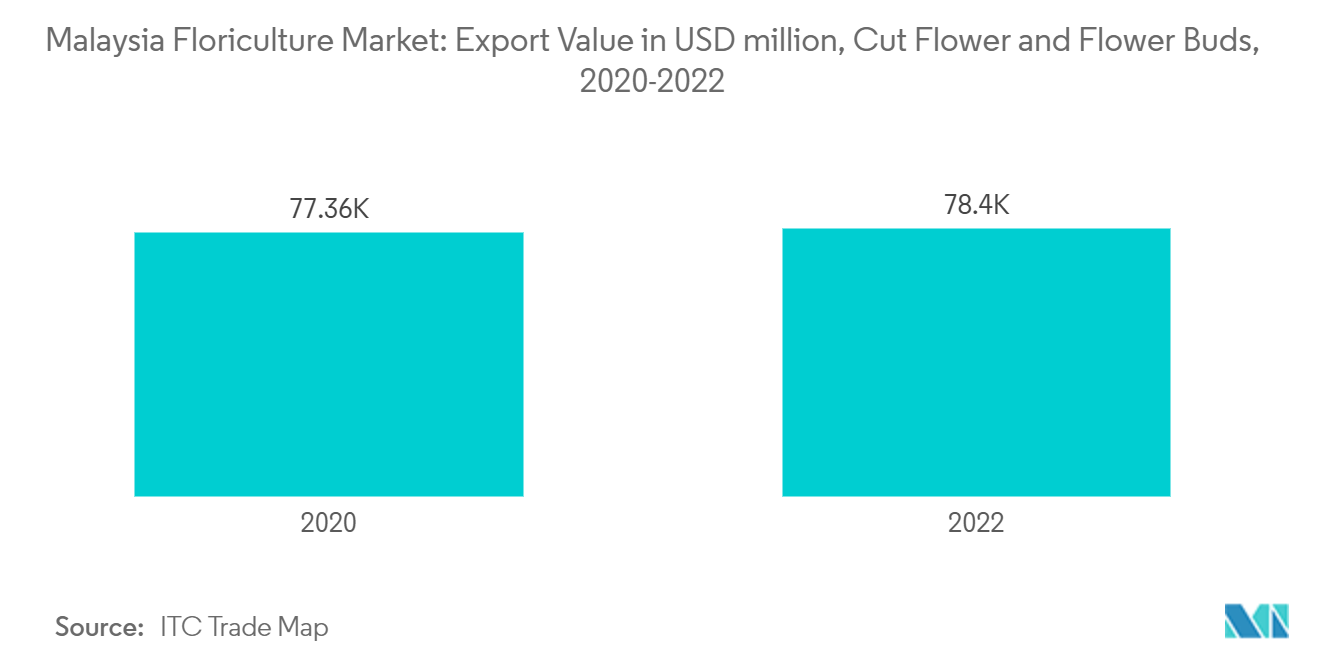Market Trends of Malaysia Floriculture Industry
Increasing Government Support is Aiding the Expansion of Cultivated Area
- Over the last 3 years, Malaysia has become home to a wide-ranging assortment of floriculture species that could generate a decent income for producers and traders and contribute to the national income. Therefore, for the sector's growth, the country's government is offering various support programs. For instance, in the National Agro-food Policy (2011-2020), the government has listed floriculture as one of its high-value industries. Development of areas for cultivating temperate flowers in the highlands is expected to cover 120 hectares, including the Lojing Highlands, Kelantan, Kinta Highlands, Perak, Sabah, and Sarawak.
- Floriculture Nursery Commercial Zones are also likely to be developed strategically to meet the demand for landscape plants under this plan. Furthermore, through this policy, the government increased the area under floriculture production to 3,500 hectares in 2020. For this purpose, the government is strengthening its support services through public-private partnerships and extension services to develop a competitive floriculture industry.
- The government also has drawn out tax and financial incentives to draw more attention toward new investments in the floriculture industry and promote the export of floriculture products. The 'Pioneer Status' is an incentive anticipated to permit the business five years of partial tax relief. Local companies that export agricultural products, including floriculture, are qualified for enhanced export allowance rates of up to 30%, 50%, and 100%, depending on their export value. The increasing area under floriculture and increased support activities for increasing investments in the sector are expected to drive the floriculture market in Malaysia during the forecast period.

Growing Export Potential for Floral Products
- Malaysia is one of the major exporters of cut flowers worldwide. The export value of fresh-cut flowers reached more than USD 80 million every year. The country exports simple climate flowers, such as roses, carnations, lilies, leaf cuttings, and decorative plants. Most floriculture products in Malaysia are produced to meet export market needs.
- In 2021, Japan was the top export destination for floriculture, followed by Australia, Singapore, Thailand, China, and the United Arab Emirates. For instance, the cut flower export value increased by 3.5% between 2020 and 2021, reaching a value of USD 90.5 million due to increased demand from Asia-Pacific countries such as Japan, Singapore, and other countries.
- The widest variety of exported orchids comprises dendrobium, sranda, and mokara. Singapore, Australia, Japan, and Saudi Arabia are the major export destinations for fresh orchids. Therefore, increased demand for the export of flowers has helped the market's growth during the forecasted period.


